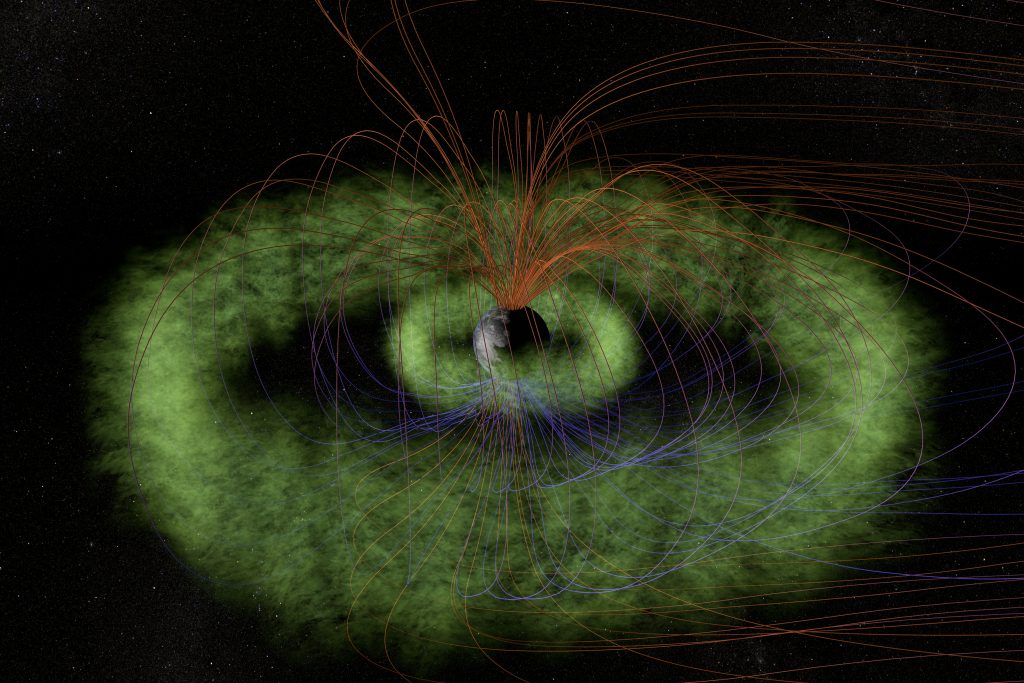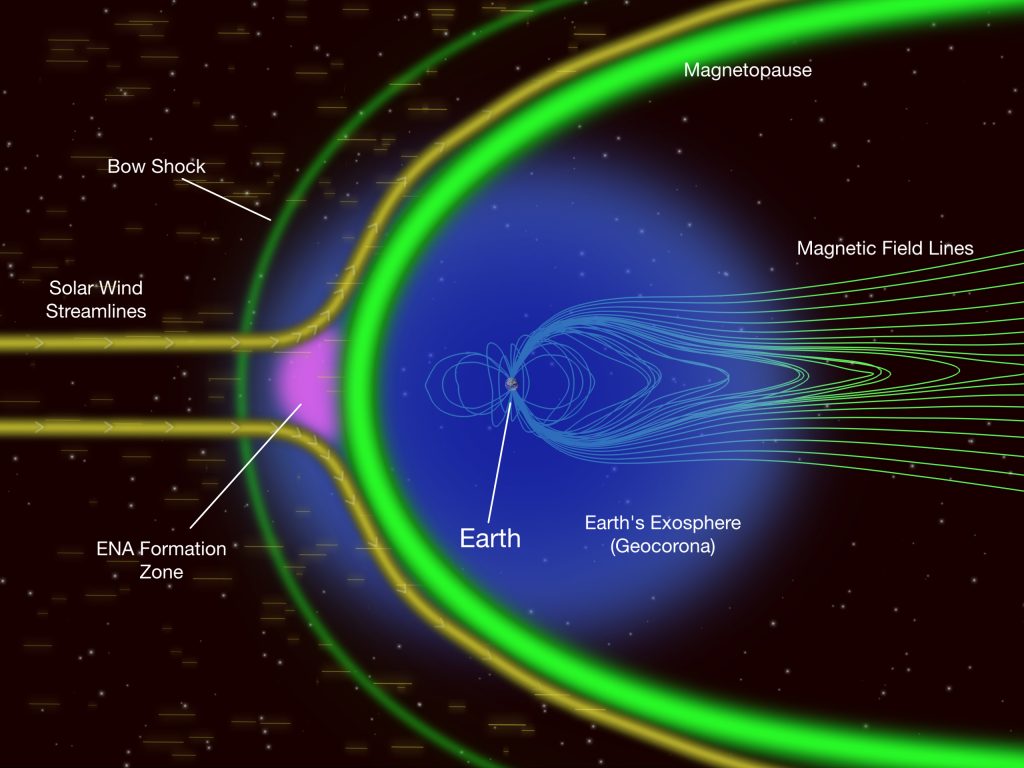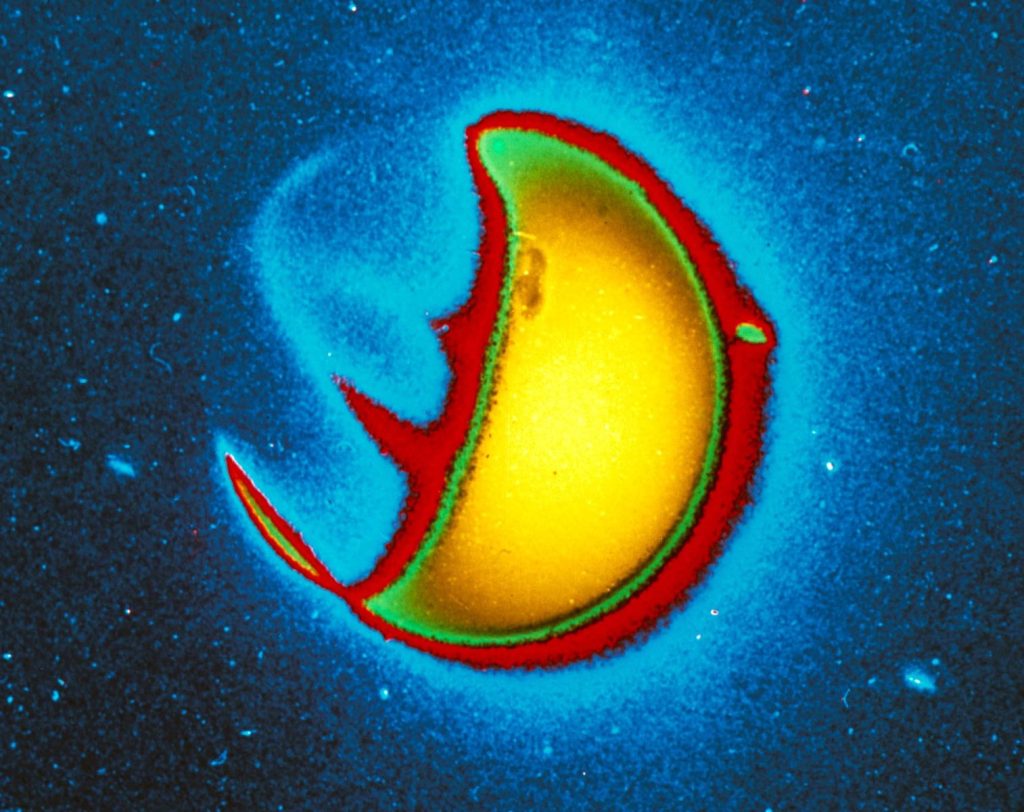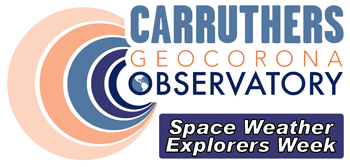Geospace
The space above 100 km from Earth’s surface is a very active place. Charged particles from the ionosphere are moved by the magnetic field. They can flow along the magnetic field right near the top of the atmosphere and crash into denser parts of the atmosphere, making a glow like that seen in a neon sign.
These particles can also be lifted higher into the magnetic field and become trapped in several donut-shaped regions around the equator of the planet, called the Van Allen Belts. Energy injected into the magnetic field from the solar wind can boost these particles to very high speeds making the Van Allen belts hazardous places for both satellites and astronauts.
Ionospheric particles can also get pulled into even more extended parts of the magnetic field, also called the magnetosphere. The magnetosphere is compressed on the day side of Earth because of the impact from the solar wind and pulled out into a long tail on the night side as the magnetic field of the solar wind passes by. The action of the solar wind pulling out the magnetotail creates a large voltage that drives a current of the charged particles in the magnetosphere. They travel along the magnetic field lines all the way back into the atmosphere up at the height of the ionosphere and then back out in an enormous electrical circuit. The current running through the atmosphere lights up the atoms and molecules there creating the aurora, also known as the northern and southern lights.
The outermost layer of the atmosphere are particles with almost enough energy to escape Earth’s gravity altogether. This region is called the exosphere and is the focus of study for the Carruthers Geocorona Observatory. The particles here are at such low density that they almost never collide with one another. The exosphere has only been photographed 4 times so far in the history of space exploration. It is seen by a faint glow of ultraviolet light from hydrogen atoms in the exosphere. The region around Earth that this ultraviolet glow can be seen is called the geocorona and extends out beyond 100,000 km from Earth. Some of the exosphere particles do gain enough energy to escape Earth and hence the atmosphere leaks out into space through the exosphere. Carruthers will be observing the geocorona to learn more about how it interacts with sunlight, the solar wind, and Earth’s lower atmospheric layers.
Activities
- Exploring Magnetism 2.2 - Explore how electric current creates magnetic fields
- Exploring Magnetism 2.5 - Explore how moving magnets create electric currents
- Invisible Light: Ultraviolet - Experiment with UV sensitive beads to find out what is an effective shield for this invisible form of light that the Carruthers Geocorona Observatory will use to study Earth's exosphere




